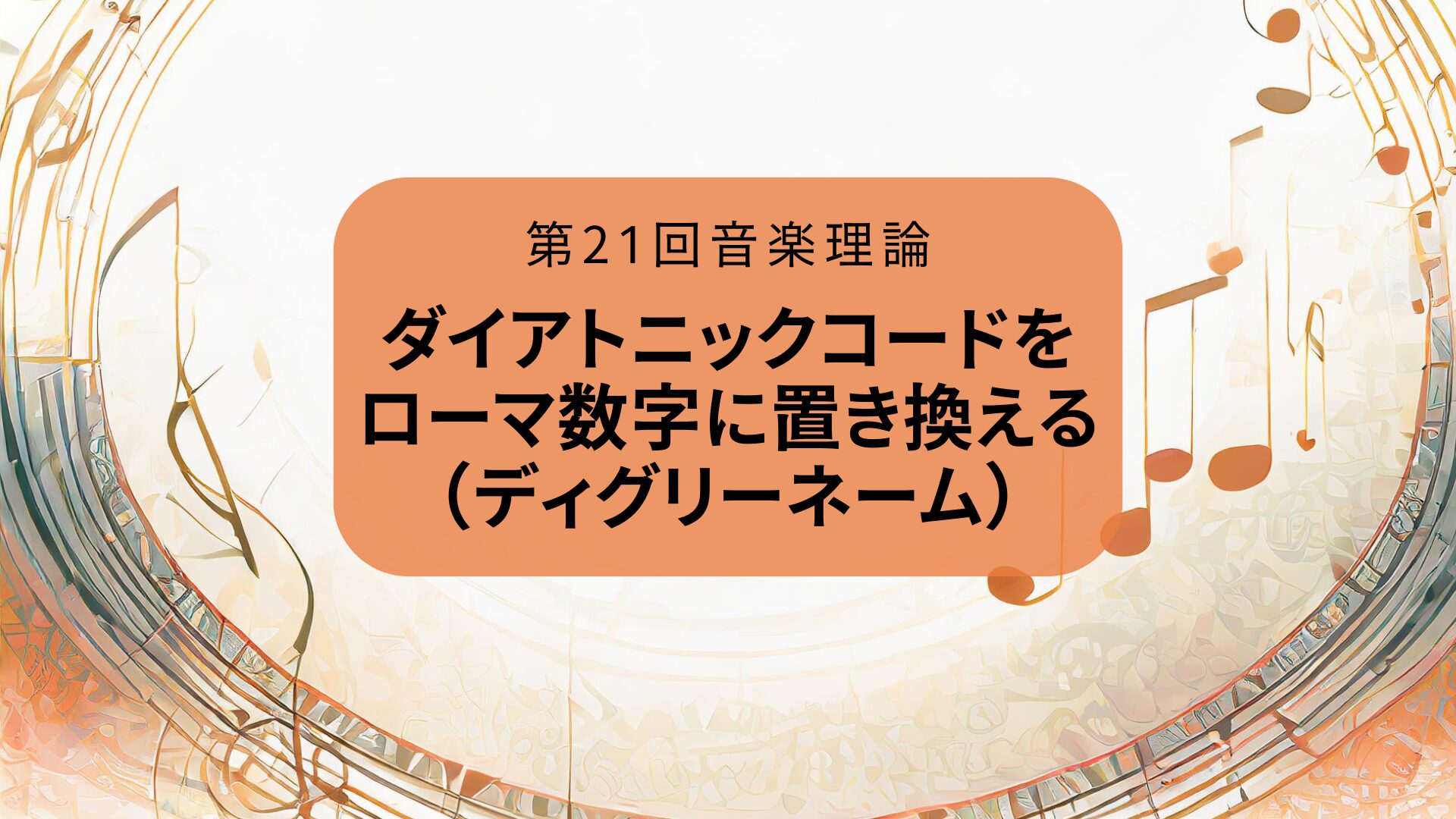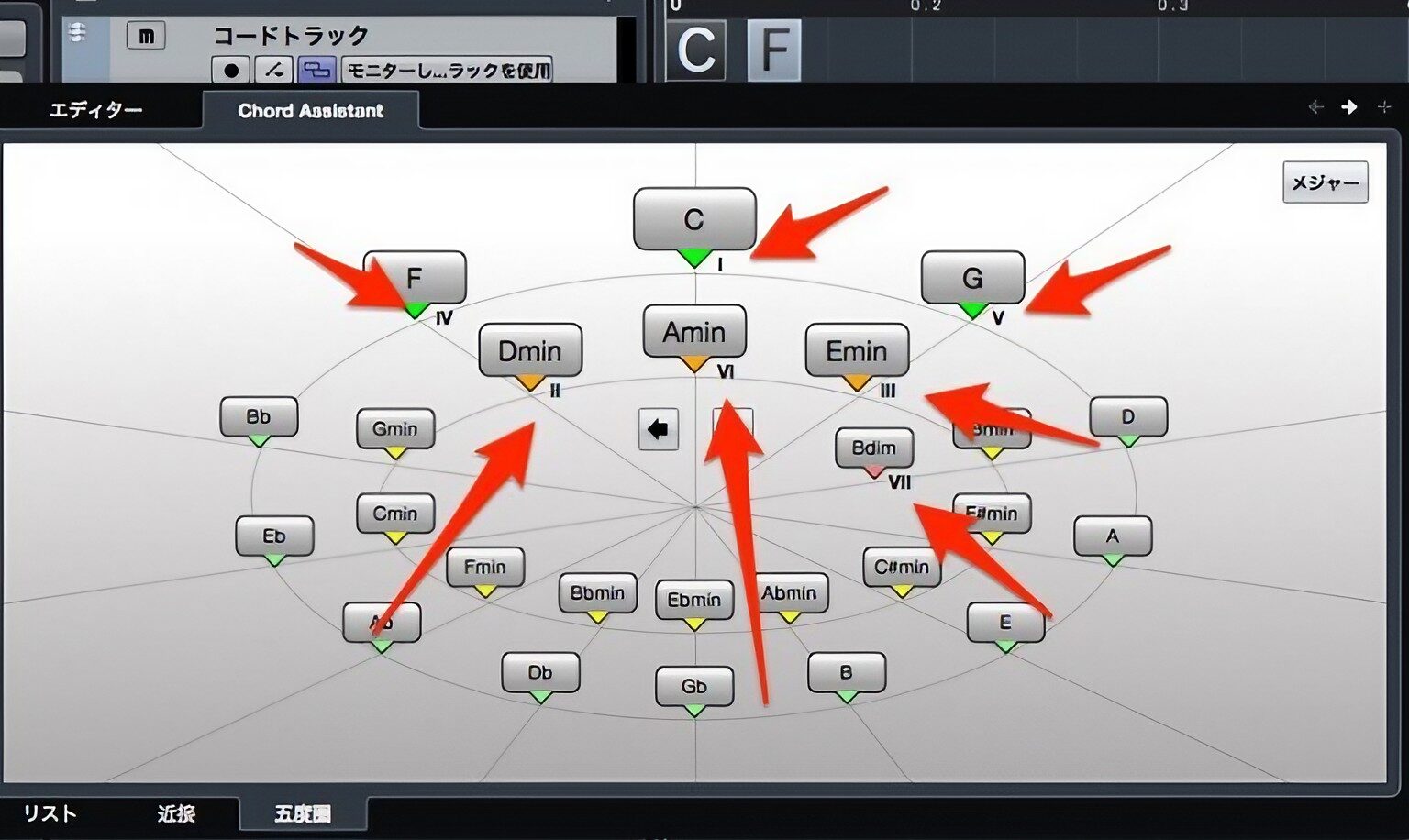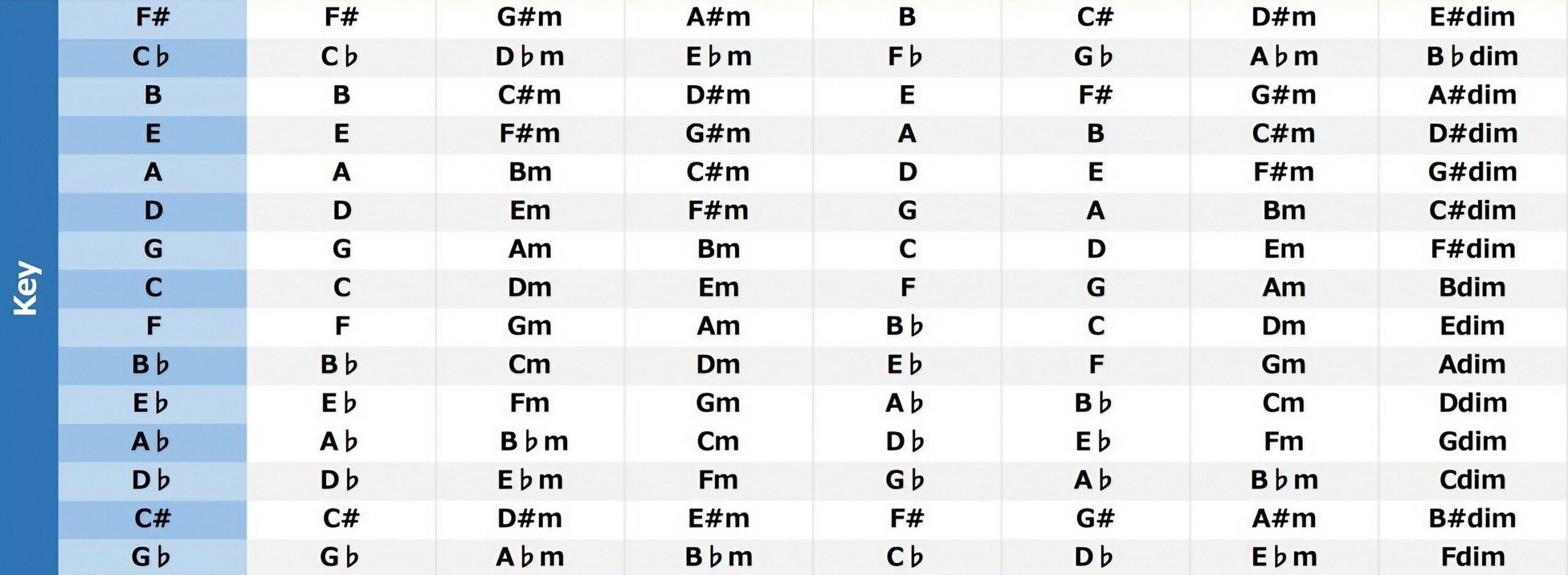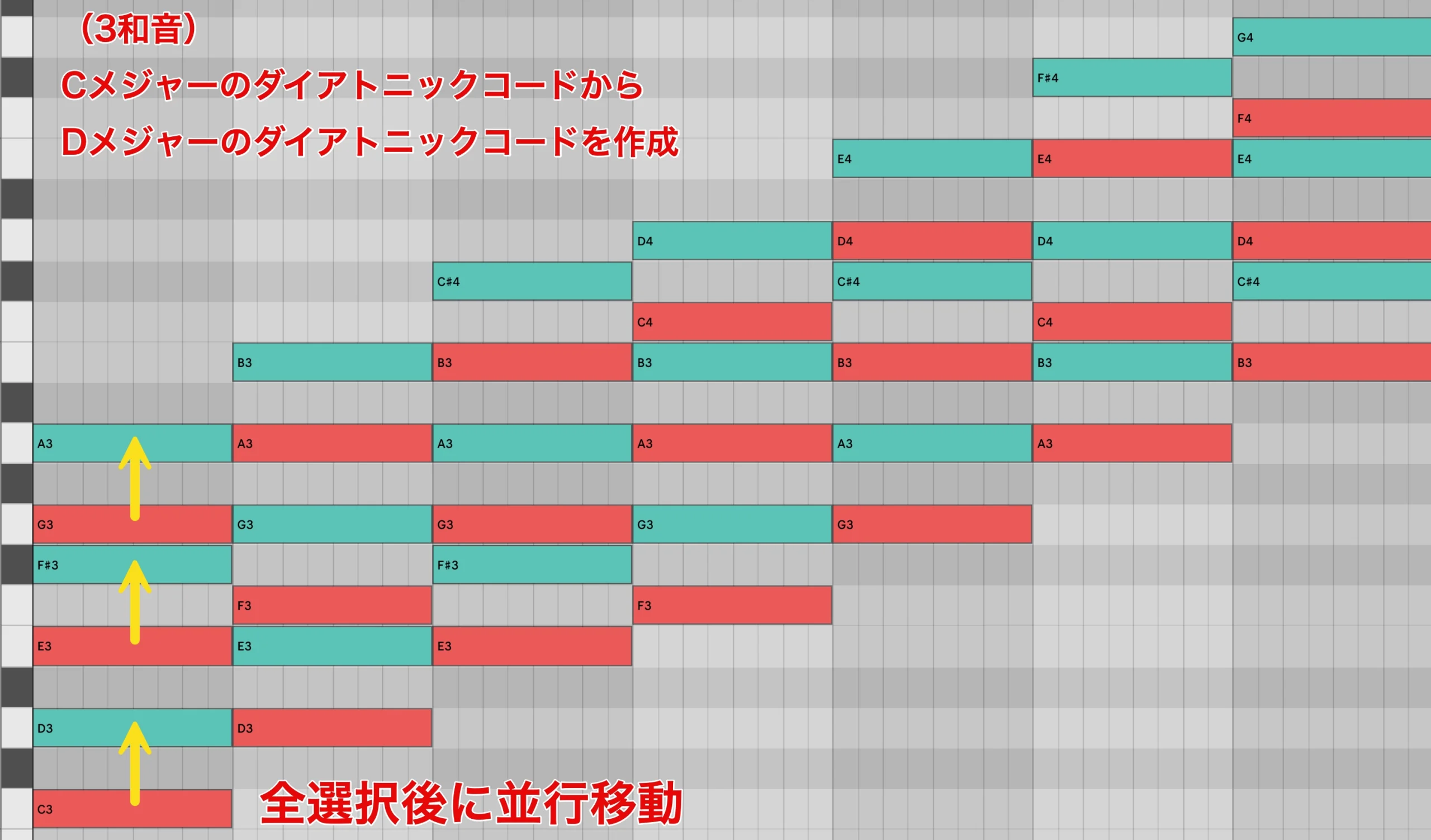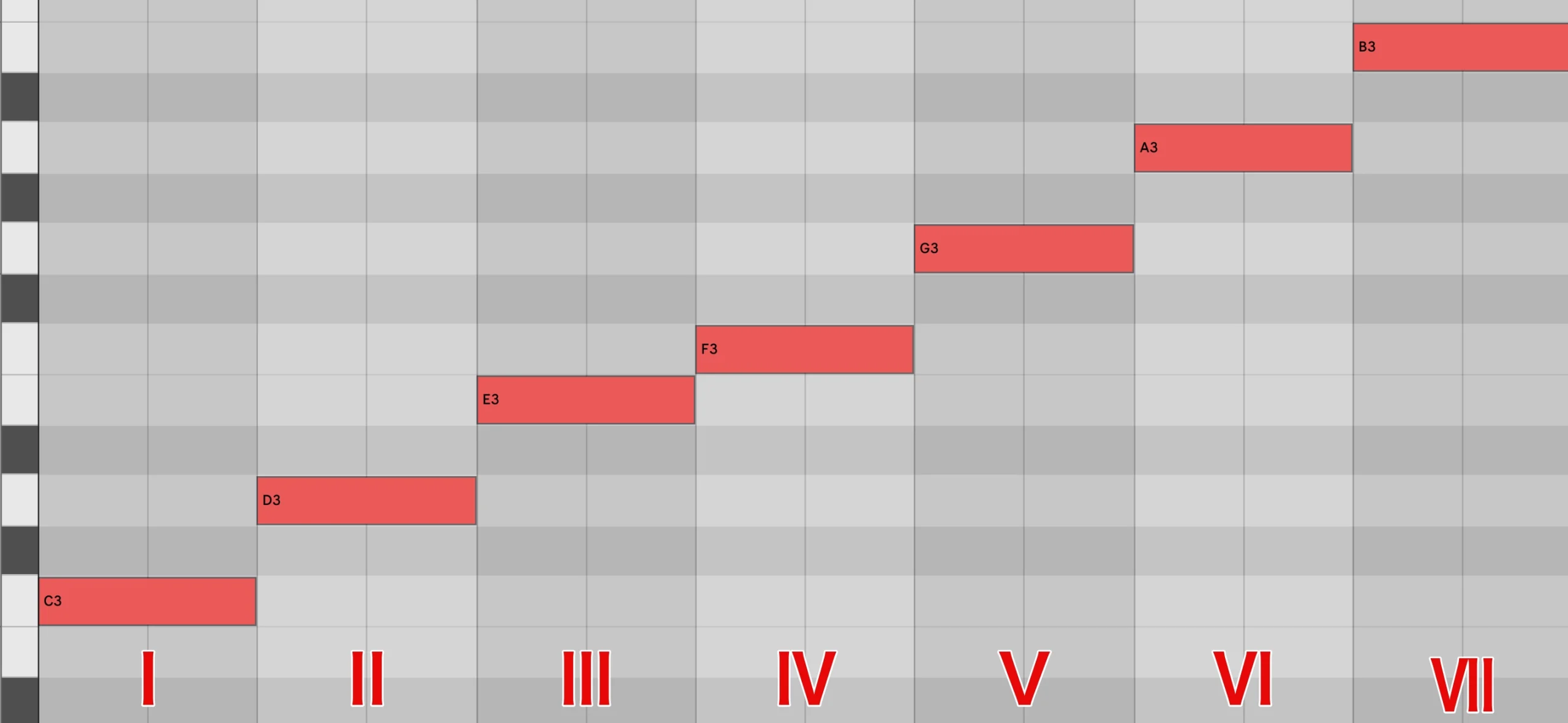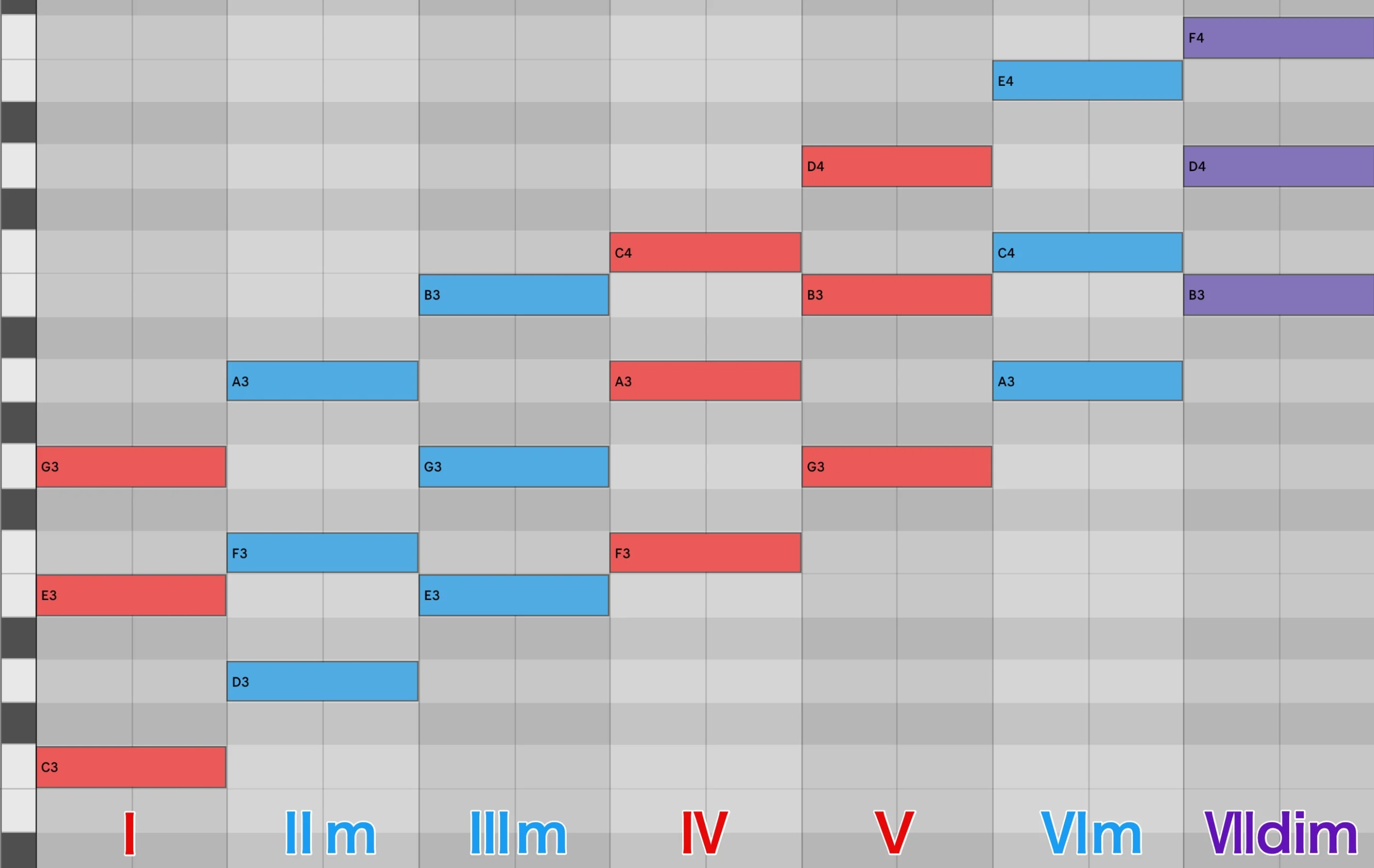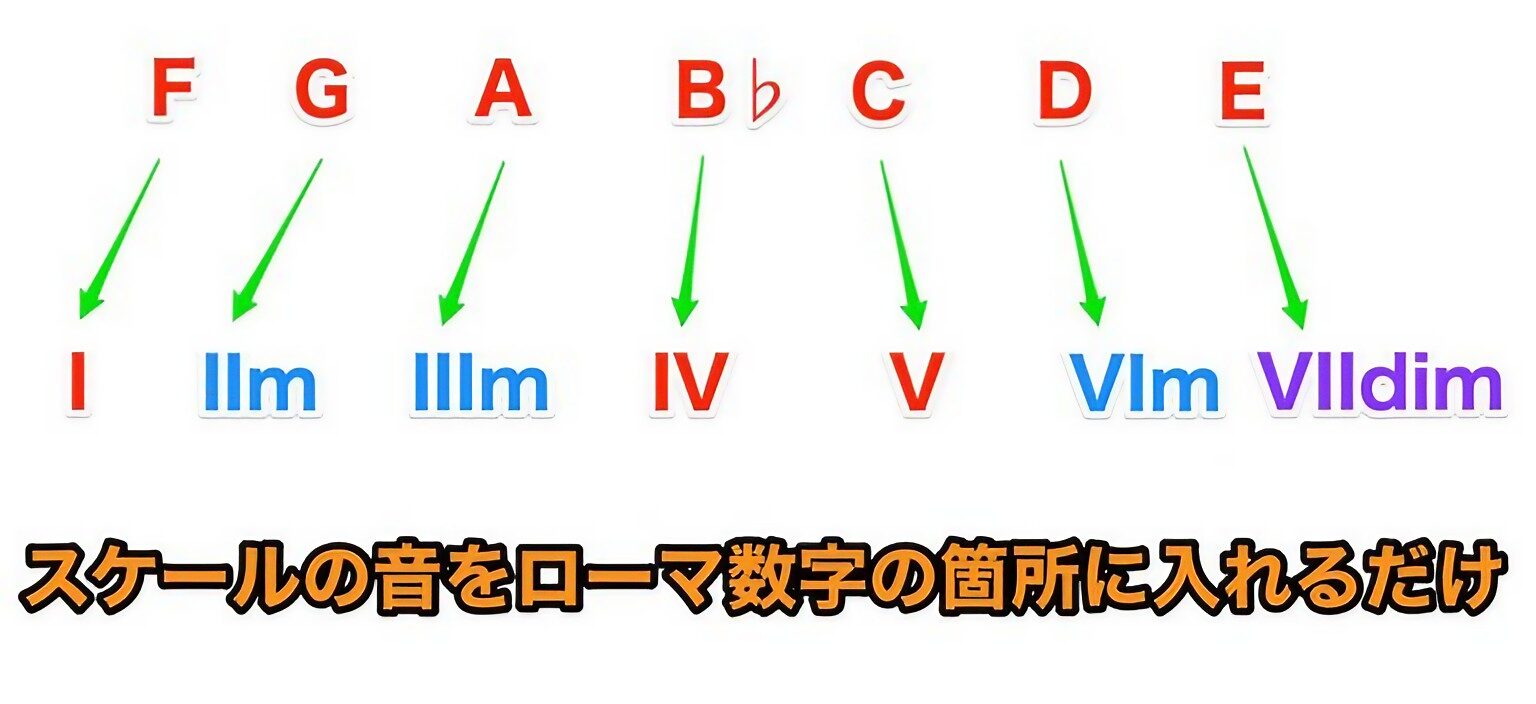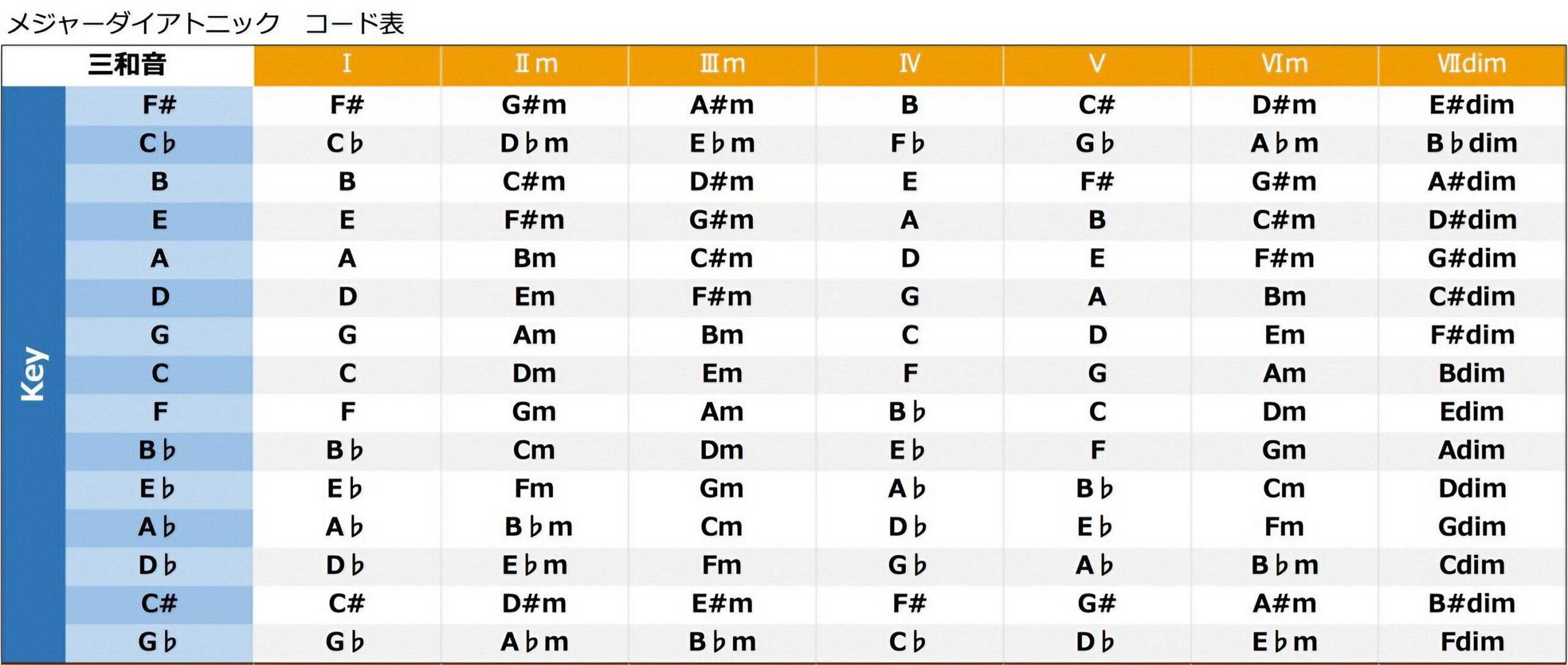ダイアトニックコードをローマ数字に置き換えて覚える(ディグリーネーム)/音楽理論講座
理論を実践に活かすための準備
今回は、コードをローマ数字(ディグリーネーム)に置き換える方法を学びます。
ダイアトニックコードがより身近になり、楽曲の解析などにも役立ちますので、しっかり身につけましょう。
音楽理論を学んだら、ぜひ行っていただきたいのが楽曲の解析です。
普段聴く曲で「かっこいい」「気持ちいい」などと感じる部分に出会ったら、そこを解析することで、自分のコード進行の引き出しとして取り入れていくことができます。
必ず楽曲制作に活用できるようになりますので、一歩一歩学んでいきましょう。
解説に使用する表は、下記URLよりダウンロード可能です。
学習にお役立ていただければ幸いです。
https://sleepfreaks-dtm.com/wordpress/music/Major_Diatonic_Triad.zip
ダイアトニックコードの法則性に注目する
ここまでダイアトニックコードについて詳しく学んできましたが、改めて各キーのメジャー・ダイアトニックコード(3和音)の一覧表を見てみましょう。
これらを丸暗記するのは非常に大変です。
しかし、これまでの講座で各キーのメジャースケールを理解していれば、今回の”ローマ数字に置き換える方法”で、すぐに把握できるようになります。
コードをローマ数字に置き換えたものを「ディグリーネーム」あるいは「コードディグリー」と言います。
直訳すると「度」で、調の中のコードの度数を相対的に表すことができます。
最大のポイントは、ダイアトニックコードはどんなキーで作っても、スケールに基づいてコードの性質の並びが同じだという点です。
- Key = Cメジャー
- Key = Dメジャー
このように、いずれも
メジャー、マイナー、マイナー、メジャー、メジャー、マイナー、ディミニッシュ(トライアド)
の並びになっています。
また、メジャー/マイナー/ディミニッシュの回で学んだように、DAW上であれば平行移動して、簡単に作ることができます。
この法則性に注目し、各スケールの度数をローマ数字に置き換えて覚えてしまおうというわけです。
スケールに沿ってローマ数字を振る
使用するローマ数字は、以下のような表記になります。
スケールの始まりの音から順番にローマ数字を振っていきます。
ここからダイアトニックコードを作りましょう。
手順は17回目に掲載した通りです。
ダイアトニックコードが作成できたら、ローマ数字の隣に各コードの性質を付記していきます。
これで完成です。
このローマ数字の箇所に各メジャースケールの音を入れるだけで、メジャーのダイアトニックコード(3和音)を網羅できるということになります。
※ディグリーネームの記述法は、メジャーの横に「△」をつけたり、マイナーは小文字(「ⅲ」等)で示すなど、様々な表記法があります。
本講座では上記の記述で統一します。
ディグリーネームの活用
スケールの置き換えを、Key=Fメジャーで試してみましょう。
ここまでの学習内容を活かせば、非常に簡単ですね。
ちなみに、それぞれの呼び名は以下の通りです。
- I = ワン・メジャー
- IIm = トゥー・マイナー
- IIIm = スリー・マイナー
- IV = フォー・メジャー
- V = ファイブ・メジャー
- VIm = シックス・マイナー
- VIIdim = セブン・ディミニッシュ(トライアド)
最後に、ローマ数字ありのメジャーダイアトニックコード(3和音)一覧表を載せておきます。
ぜひ、学習にご利用ください。
(リンク先を保存で大きいファイルを取得できます)。
次回はこのディグリーネームを活かして、簡単な解析や転調、また有名なコード進行を学ぶなど、更に踏み込んだ使い方に入ります。
ぜひ今回の内容をマスターしておいてください。





